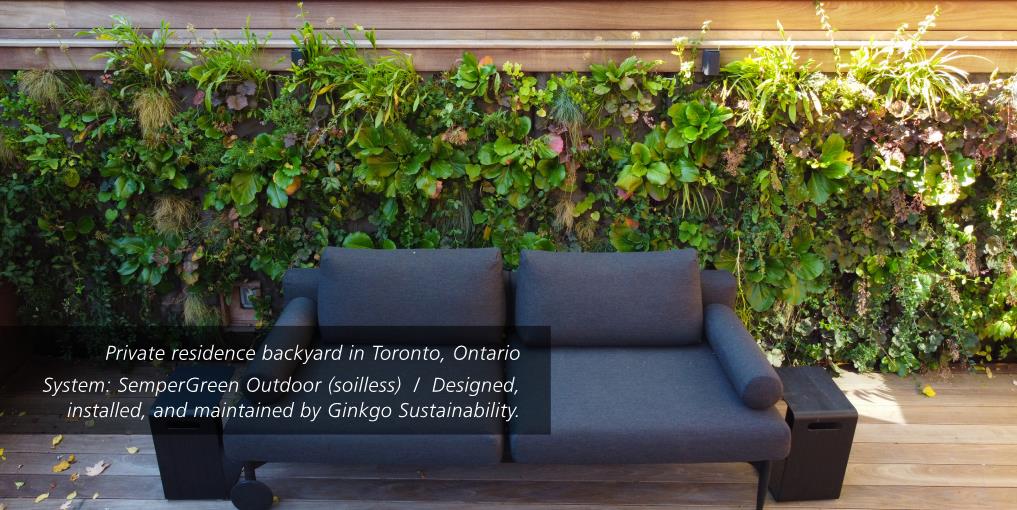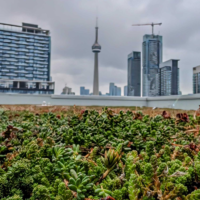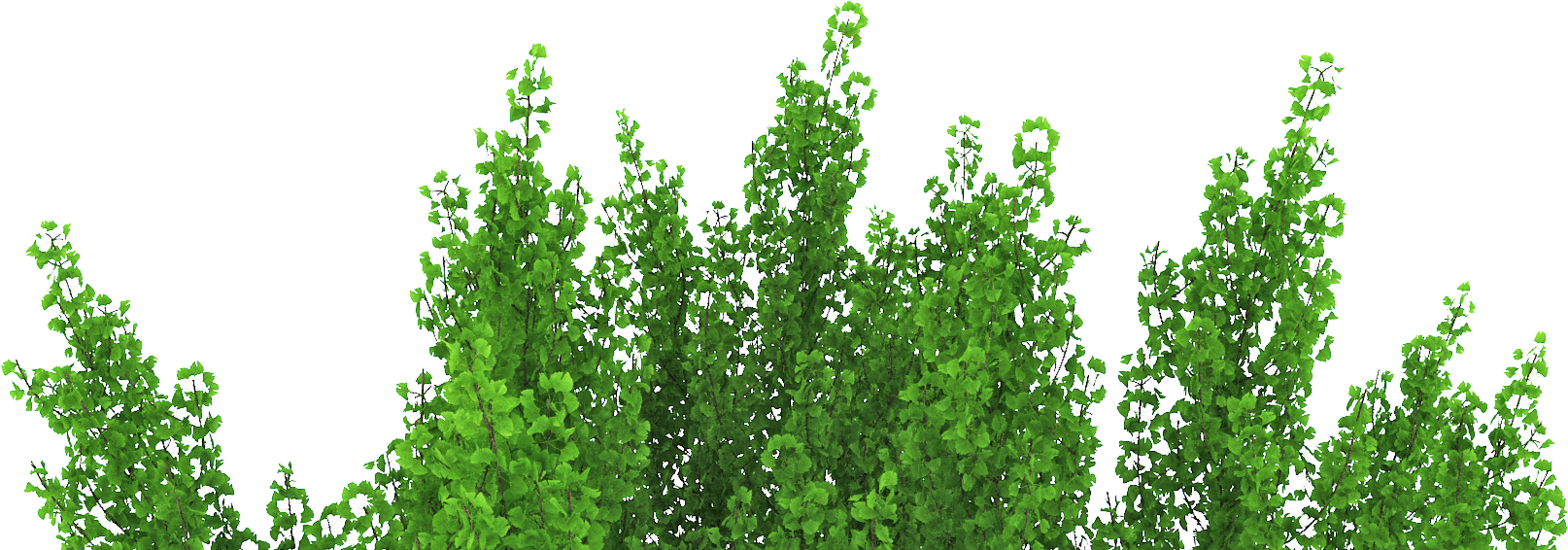Living Walls 101
Green walls are growing in popularity, especially in urban areas. There are several types of green walls: living walls, green façades, vertical forests, and living retaining walls. In this post, we are highlighting Living Walls.
What are living walls?
Living walls are vertical gardens that can include a wide range of plants, plant designs, growing media, and irrigation systems that can be simple or more intricate in design.
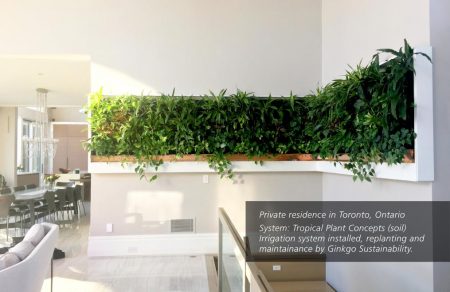
The different types of living wall systems are geoponic (soil-based) and hydroponic (soilless). Each system meets the essential needs of plants but in very different ways. Soil-based systems use a variety of containers or pockets to hold the soil and plants. Plants can receive water via hand-watering, a recirculating tank or direct irrigation. The soil retains the nutrients needed for healthy plant growth and water for prolonged hydration. Hydroponic systems hold plant roots between fibrous materials where plants receive nutrients from a diluted fertilizer within the irrigation system. Both of these systems allow plants to thrive and can be installed indoors and outdoors, depending on the system and climate.
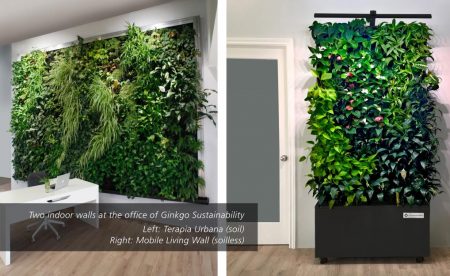
Plants and plant designs include herbs, tropical, and woody plant species. These systems range from small and simple herb gardens that can be hand-watered, to larger and hydroponic tropical gardens that incorporate automatic irrigation and fertigation. Lighting for plant health is an important consideration when designing living walls. Light sources can be natural or can be provided through supplementary grow lighting. Each living wall is unique, and the scale and scope vary in numerous ways.
Living Wall Benefits
Additionally, living walls provide a number of beneficial attributes to people and the environment. These systems provide air filtration, noise level reduction, and an aesthetically pleasing living-art piece that can improve mental well-being and our connection to nature. Outdoors and living walls also play a role in adding to urban green space. This role encompasses a wide range of benefits. Including providing additional space for pollinators, adding to urban biodiversity, and helping to cool the surrounding air during hot summer months.
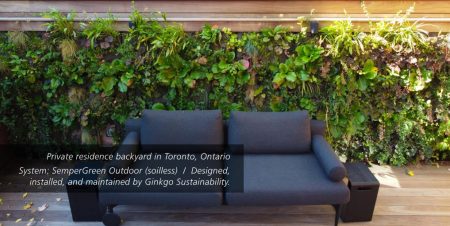
Whether you prefer a living wall inside or out, large and built-in, or small and mobile, they all aid in building a symbiotic relationship between people, plants, and the natural and urban environment.
Check back soon for our next piece on green façades!
Visit our page for more information.
or
Visit our E-Store to purchase one of our Mobile Walls featured in the photos.
Authors: Kelly Keresteci & Megan Stevenson

